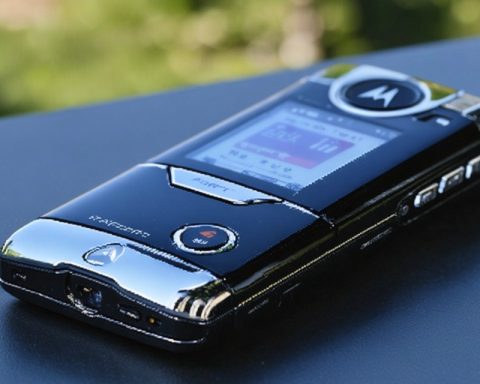- Mr. Yang from Shanxi, China, experienced unauthorized transactions in his bank account due to “password-free payments,” funneling funds into an Apple account for digital items.
- The “password-free payment” feature, meant for convenience, can be exploited by cyber thieves, leading to unauthorized access and transactions.
- Reports of such fraudulent activities are increasing, with many victims unaware of the siphoning of funds until it’s too late.
- To mitigate risks, deactivate “password-free payments,” maintain security with robust passwords, and enable two-factor authentication.
- Conduct regular financial checks, scrutinize transaction notifications, and halt unnecessary subscriptions to prevent unauthorized debits.
- If fraud is suspected, swiftly freeze payment channels, gather evidence, and file complaints with payment platforms and law enforcement.
- Balance convenience with security by managing payment settings vigilantly to prevent potential financial losses.
https://youtube.com/watch?v=g6EwPdjKk_Y
Imagine waking up to find your bank account mysteriously drained while you were peacefully asleep. For Mr. Yang, a consumer in Shanxi, China, this was not a nightmare, but a chilling reality. A quick glance at his phone revealed a series of overnight transactions totaling 4,526 yuan. The money had vanished into a virtual black hole—his funds had been funneled into an Apple account and spent on digital items in a game he never played.
Mr. Yang was confident he had never authorized such payments and suspected his account had been hijacked by cyber thieves exploiting the convenience of “password-free payments.” This feature, increasingly popular in the digital economy, allows users to make quick purchases without inputting a password, for amounts below a certain threshold. Yet, it has inadvertently become a gateway for unauthorized transactions.
This unsettling incident is scarcely isolated. Reports of similar fraudulent activities have surged, prompting a wave of complaints to China’s Consumer Association. Many victims have discovered substantial sums surreptitiously siphoned from their accounts, often towards the purchase of game tokens or subscriptions, leaving them bewildered and helpless.
The irony lies within the feature itself: designed for ease and efficiency, “password-free payment” can backfire spectacularly if used maliciously. A device mislaid or an account compromised can provide a carte blanche for unauthorized access and unapproved transactions, often without a victim’s immediate awareness. These thefts are usually carried out stealthily, perhaps during the early hours when account holders are least vigilant, leaving individuals to unwittingly uncover waves of deductions post-facto.
Avoiding Pitfalls: Here’s how to proactively safeguard against these digital threats. First, maintain judicious control over payment features. Deactivate unnecessary “password-free payment” options and regularly scrutinize the apps linked to your payment accounts. Discard permissions for third-party apps that are seldom used or unfamiliar. Secondly, fortify account security by using robust, unique passwords and activating two-factor authentication for an added layer of defense. Avoid connecting to public Wi-Fi for financial transactions, as such environments are ripe for data interception.
Moreover, cultivating a habit of routine financial checks can be invaluable. Regularly review transaction notifications and scrutinize every message from payment platforms for inaccuracies. Halt subscriptions that are no longer needed, effectively preempting unauthorized future debits.
Swift Response Measures: Should you suspect your account has been compromised, expedience is vital. Promptly initiate a freeze on your payment channels through banking or payment service platforms. Document all evidence of the transaction breach—timestamps, transaction ids, and screenshots—and file a formal complaint with the payment platforms. If the financial loss is significant, it’s crucial to report to law enforcement with all supporting documentation.
In a world where convenience reigns supreme, the seductive ease of mobile payments shouldn’t obscure the potential hazards that lurk beneath. It’s crucial to strike a balance between convenience and security; vigilance and proactive management of payment settings are paramount. Should disputes arise, leverage consumer rights platforms, like the “National Consumer Association Smart 315,” to assert your rights. Embrace mobile payments wisely, for the stakes are far too high to ignore.
How to Secure Your Finances Against Modern Digital Threats
Understanding the Risks of Password-Free Payments
The Rise of Password-Free Payments:
In today’s fast-paced digital economy, the convenience of “password-free payments” has gained popularity. These systems allow users to make transactions below a certain amount without entering a password, making shopping swift and seamless. According to a report by Forbes, the global adoption of password-free payments is expected to grow at a compound annual growth rate (CAGR) of 15% in the coming years. However, as Mr. Yang’s situation in Shanxi, China, illustrates, these conveniences come with significant risks.
Potential Risks and Countermeasures
1. Unauthorized Transactions:
Cyber thieves can exploit these systems by gaining access to your devices or accounts, resulting in unauthorized transactions. This vulnerability is especially critical during nighttime or in situations where device owners are not vigilant.
Countermeasure:
– Deactivate Password-Free Payments: If security is a concern, opt to disable this feature on payment platforms.
– Use Stronger Authentication: Employ two-factor authentication (2FA) for an added layer of security. This ensures that even if someone gains access to your account information, a second factor is needed to complete a transaction.
2. Account Hijacking:
Fraudsters often use public Wi-Fi or phishing tactics to hijack accounts. Using unsecured networks can expose personal and financial information to hackers.
Countermeasure:
– Avoid Public Wi-Fi: Refrain from conducting financial transactions over public or unsecured Wi-Fi networks.
– Regularly Monitor Accounts: Conduct frequent checks of your bank and transaction history to catch unauthorized activities early.
3. Over-Reliance on Technology:
While technology offers ease, relying solely on it without proper checks can lead to neglect. Compromised accounts can remain unnoticed, leading to financial loss.
Countermeasure:
– Routine Financial Checks: Establish a routine to review financial statements and transaction alerts thoroughly.
– Limit App Permissions: Regularly review and manage app permissions, especially those involving financial data.
Swift Response Measures to Cyber Fraud
Immediate Actions:
1. Freeze Your Accounts: Quickly freeze your bank and payment accounts if unauthorized transactions are suspected.
2. Gather Evidence: Document all suspicious activities for future reference.
3. Contact Authorities: Report the incident to both the payment platforms and, if applicable, the local police or cybercrime unit.
Long-term Security Practices
– Use Unique Passwords: Incorporate upper and lower case letters, numbers, and special characters to create robust passwords.
– Educate Yourself: Stay updated on evolving digital threats and cybersecurity solutions.
Actionable Recommendations
– Financial Educator’s Tip: Frequently participating in cybersecurity webinars and reading industry reports can enhance your understanding of digital threats.
– IT Security Expert Tip: A password manager can help maintain complex passwords without the hassle of remembering each one.
For additional security insights, consider reputable sources like Kaspersky.
Conclusion
Balancing convenience with security is crucial as digital payments become more pervasive. By implementing vigilant financial management practices and staying informed about emerging security threats, consumers can enjoy the convenience of mobile payments while protecting themselves from potential fraud.












